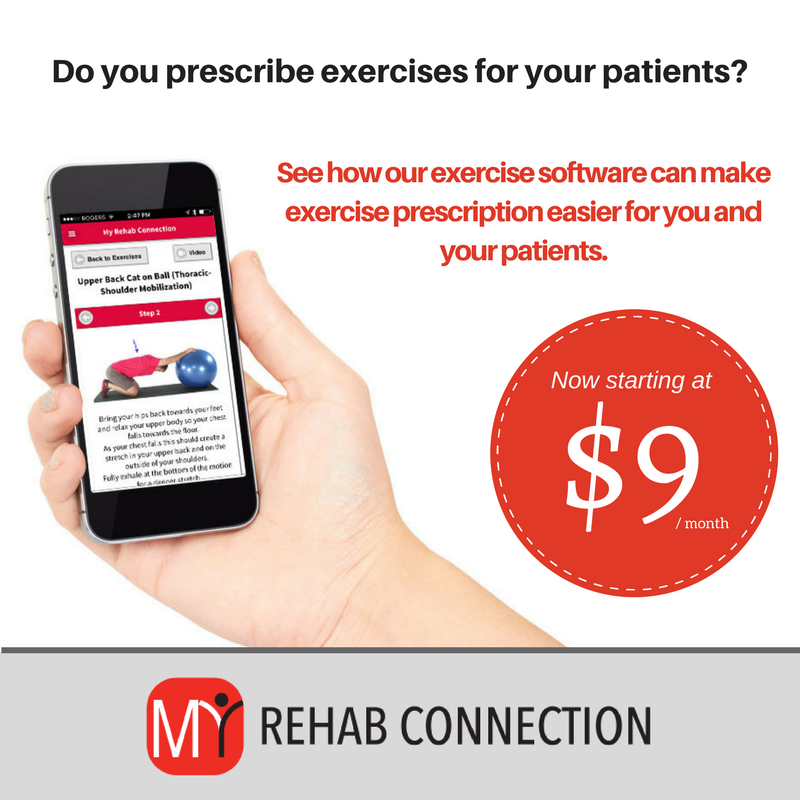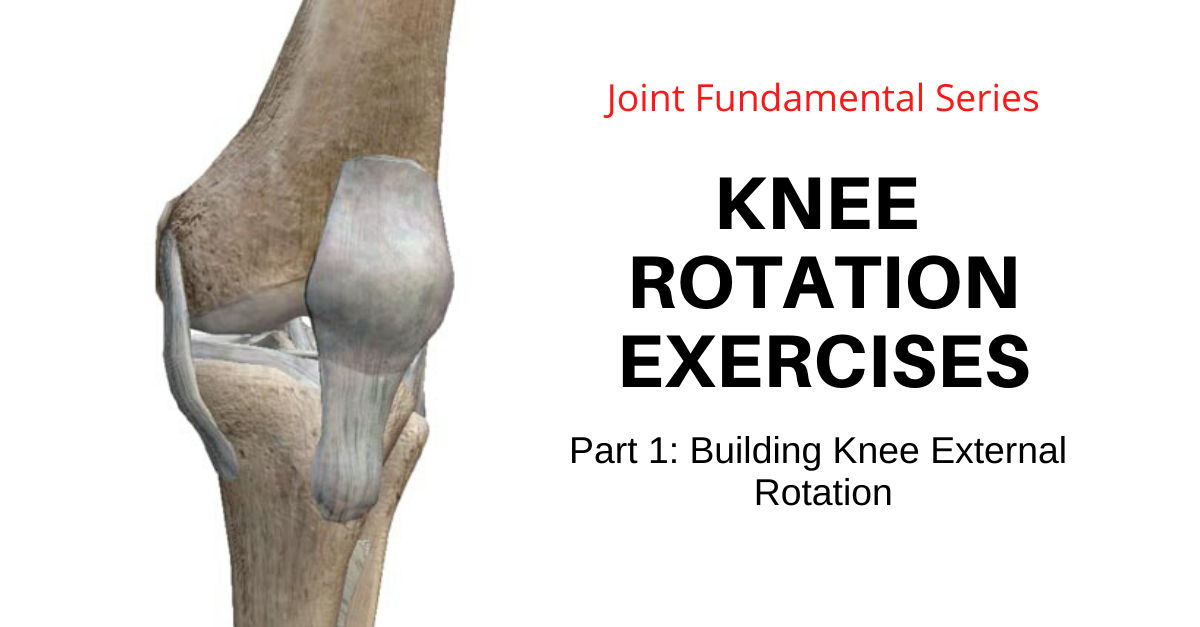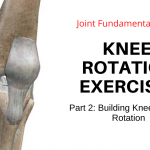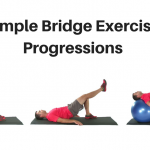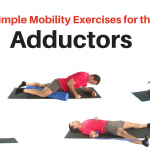When we think about the knee we conceptualize it as a hinge allowing large ranges of flexion and extension. But the knee does not behave like a conventional hinge you would find in a door. The knee is actually classified as a modified hinge, and this hinge allows for rotation to occur as the knee.
Yes, the knee is supposed to rotate. In fact, the ability of the knee to rotate is an absolutely critical motion if we want our knee (or our patients knees) to get and stay healthy. But despite it’s importance, knee rotation is often neglected in knee training and rehabilitation programs.
So let’s spend the rest of this article discussing knee rotation, including what it’s so important, how we can assess it, and then we’ll review some knee rotation exercises that I often use in my office when treating knee pain patients.
The critical importance of knee rotation
Your lower extremity is regularly subjected to rotational stresses. This occurs with sports such as tennis and golf, but really any time you twist or turn some of this rotational stress filters down to your knees.
But it’s not just during these obvious examples where knee rotation is important. The ability of the knee to rotate is also essential for overall joint health.
Remember as stated above, the knee is not a true hinge like you would see in a door. Instead of pivoting around a fixed point it actually glides along the rounded femoral condyles as it flexes and extends. As it does this it needs to be able to rotate internally and externally. Biomechanically this is referred to as the screw home mechanism, and it is essential for knee health.
When this rotation does not occur properly it will change how the knee moves. This has the potential to create abnormal stress and shear patterns through the knee and, over time, may lead to accelerated tissue breakdown or repetitive strain injuries in and around the knee.
Before we discuss strategies to improve knee rotation, we need to consider how to assess knee rotation. We need to know if knee rotation is even an issue that needs our attention.
Testing Knee Rotation Flexibility
The first thing we need to assess is rotational flexibility. This is a measure measure of a joint’s basic ability to move through it’s “normal” range of motion.
To test rotational flexibility of the knee position your patient/client supine with their hip and knee flexed to 90 degrees. From here we can assess passive flexibility by turning the tibia internally and externally.
As far as what we are looking for or what is considered normal, most sources suggest knee internal rotation should be somewhere around 20-30 degrees, with external rotation being around 30-40 degrees.
But in practice it is difficult to accurately measure these ranges. So really what we are looking for is whether or not the knee moves freely and fairly easily, and is able to move approximately 20-30 degrees into internal rotation and a little more than this into external rotation.
If we find that flexibility is lacking, we make note of this finding. One of our treatment goals is now improving rotational flexibility.
From here we can move on to testing coordination.
Testing Knee Rotation Coordination and Control
Next we can assess coordination and control. What we are really looking for here is whether our patient is able to actively move the knee into internal and external rotation. We want to know if they are able to actively contract and control the muscles around the knee that are responsible for knee rotation.
To test coordination and control of knee rotation we can keep the patient lying on their back with the hip and kneed bent 90 degrees. But now instead of us passively rotating the lower leg in and out we can ask our patient to perform the motion actively.
As our patient does this we are looking for two things. First, we want to simply see how well the patient is able to perform this movement. Are they able to isolate movement at the tibia, or do we see compensatory motions at the foot and ankle or at this hip and thigh?
Second, how far can they move. Is it the same or at least very close to the ranges available passively? Or is it less?
If either of these areas are deficient make note of these findings. One of our treatment goals is now improving rotational coordination and control.
Testing Knee Rotation Strength
Finally, we want to assess strength. Remember, as important as mobility is, joints rely on muscular forces to create the stiffness and stability needed to resist stress and prevent injury.
To test strength of the knee in internal and external rotation we can again keep the patient in the position used when testing flexibility and coordination. From here, what we want to do is test the ability of the knee to resist rotation.
To test the strength of knee internal rotation we can wrap our fingers around the outside of the patients’ heel and our forearm around the patients inner forefoot. From here we are going to start to very gently pull the heel in with our fingers as we push the forefoot outward with our forearm. As we do this we’re going to ask the patient to rotate the lower leg inward against pressure. They are trying to actively hold the knee/lower leg stable against our pressure.
As we apply pressure we are going to do so very gradually. We do this first and foremost to be careful not to overload the knee, especially if we are dealing with a sensitive or injured knee. But going slow also provides a more accurate assessment of strength (as when we go too quickly we often miss the point when the knee starts to “give” against our pressure).
We can measure external rotation the same way, but we change our body position so we are standing on the opposite side of the patient. Now we are able to hold the inside of the heel with our forearm along the outside of the forefoot. And of course our pressure/resistance is into internal rotation.
With respect to strength, what is considered normal vs abnormal is not always black and white. This is a measure that is difficult to accurately quantify in the clinic. And even if we could, knowing how much strength is actually needed will vary based on individual needs.
So to simplify this what I am really looking to see is whether or not the patient can hold the knee stable against a moderate to heavy overpressure. If they can’t, one of our treatment goals is now improving rotational strength.
Knee Rotation Exercises
Knee Rotation Exercises to Build Control and Coordination
NOTE: Remember if you are a My Rehab Connection Subscriber all of these exercises can be found in My Exercise Library
To train coordination and control of the knee we are going to use active range of motion exercises with a very specific rotational focus. (If you are familiar with the Functional Range Conditioning System these would be an example of a Capsular CARS exercise.)
Now there are several ways to do this but the way I typically start with most patients is to have them in kneeling lunge position (if kneeling is uncomfortable seated in a chair will work as well). For this to work best you want the front foot to be able to slide, so doing this on hardwood or tile floor and putting a towel under the foot will help.
From here what we are going to ask our patient or client to do is simply rotate their lower leg and foot internally and externally. Motion of the toes outward and the heel inward is knee external rotation. As the toes go in and the heel goes out, this is knee internal rotation.
Keep in mind that our aim here is to isolate movement at the knee, so we really want this rotation to occur exclusively through the tibia.
To help with this we need to make sure the foot stays flat on the floor. This will help block compensatory inversion and eversion of the ankle, which is a very common compensation seen with limited knee rotation.
I also find it helpful to focus on moving the heel and forefoot in opposing directions. For example, during external rotation we want to bring the heel in as the forefoot moves out, and then for knee internal rotation we want to slide the heel out as the forefoot comes in.
The other common compensation that you’ll see all the time will be movement of the thigh back and forth. To help minimize this we can block this by placing a block between the knees, or by placing a stiff strap around the distal thigh. The main goal here is to lock the thigh in place to focus motion at the knee.
As a side note, the way I like to use these blocks is that if the knee thigh has a tendency to fall in, I like to use the strap and have the patient lightly press out against the strap to create tension in the abductors. In this way it becomes more of an active block. Likewise, if the tendency is for the thigh to go outwards I will lean more towards using the block and having the patient or client squeeze into the block to activate the adductors.
Knee External Rotation Flexibility Exercises
Option 1: Knee External Rotation PAILS
If we find that flexibility (PROM) of knee external rotation is limited, we need to plug something into our treatment program to help improve this findings. When we see these cases in our clinics there are of course manual therapy options we can use, but we also want to be able to give our patients or clients something they can do at home.
Here we’re going to talk about how to perform a PAILS exercise for knee external rotation. These exercises, which stands for Progressive Angle Isometric Loading, an integral component of the Functional Range Conditioning system, which incorporates isometric contraction into a stretched or endrage position. Not only do these contractions influence passive tissue components, but will also affect the neurological components such as the stretch reflex and muscle spindle sensitivity. In other words, it will help improve stretch tolerance.
When training knee external rotation we are going to start with the inside of our foot against a wall. Once we’re in this position we’re going to place a heavy kettlebell against the outside of our heel. This kettlebell isn’t absolutely necessary but does help to provide something to push against when we get to the contraction phase of the exercise.
With our foot in place we can then start to bring our knee in towards the wall, which will create external rotation at the knee.
You need to be very careful with this motion, especially when dealing with knee pain or injury, but if this position is tolerated we want to relax into and hold this position up to 2 minutes.
Now following this passive stretch we can then start to incorporate some contraction. In this example, to help improve knee external rotation we want to contract into internal rotation. To do this we can start to rotate our forefoot into the wall and our heel out against the kettlebell. Remember, we want to be careful not to strain or irritate the tissue, so start easy. Once you establish the desired intensity you can then hold the contraction from 10-30s, then slowly relax and if possible let the knee move farther toward the way to establish the next tissue barrier. Relax into this new position for 10-30 seconds, then perform another contraction. You can repst this 3-4 times.
Option 2: Knee External Rotation Mobilization with Band
Another option to help improve knee external rotation is to perform an Active-Assisted mobilization using a resistance band. Here we can start in a kneeling position with a relatively stiff resistance band wrapped around the back of our heel. To promote external rotation we want the other end of the band to be secured so the band is running in front of our body.
With the band secured around our heel we want to first rotate our heel outwards to engage the rotational muscles around the knee. Then we want to slowly rotate the heel inwards, which starts to rotate the knee externally. During the first part of the movement we are working to eccentrically control the rotational moment created by the band. As the knee moves farther into external rotation we want can then transition into more of a concentric contraction. Here the band acts as assistance and helps to achieve a greater range.
We can hold the end position for a few seconds then slowly rotate in the opposite direction again. We can slowly perform 10-15 repetitions.
Knee External Rotation Strength Exercises
Once the knee has sufficient flexibility and control, we can then start to progress to higher level loading and strength exercises.
One option that I often use in my clinic is to train knee rotation from a kneeling position using a stiff resistance band or cable. We’re going to set this up by wrapping the band around the inside of our heel with the band positioned away from us. From here we are going to slowly pull heel inwards against the resistance of the band.
As we do this we want to keep the forefoot flat, almost as if we are pivoting from the ball of our foot. We want to firmly hold the contraction in this end position for a few seconds, then slowly rotate the heel outwards.
Sets and Reps
Remember, if the goal is to promote strength we want to provide enough stimulus to actually get the tissue stronger. But at the same time, we are often prescribing these exercises as part of a rehabilitation program, so we also need to respect the potential for easily irritable or healing tissue.
So we may need to ease into these exercises and initially keep the resistance low. But once tolerance has been established I will typically have patients perform anywhere from 3-5 sets of 6-10 repetitions. And they will typically perform these two to three times per week.
But the execution of these sets and reps need to be very deliberate. Remember, it is not easy to get strong. To make this point with my patients I often use the example of someone going to the gym. If someone wants to build bigger and stronger biceps, they can go to the gym and do some biceps curls, if they’re not doing enough curls, and if they’re not fatigued after those exercises they probably didn’t work hard enough to create a change. So I instruct my patients to do sets of 6-10 repetitions, they should expect those last few reps to be challenging. If they get to 10 repetitions but feel like they could have done more they need to increase the resistance.
